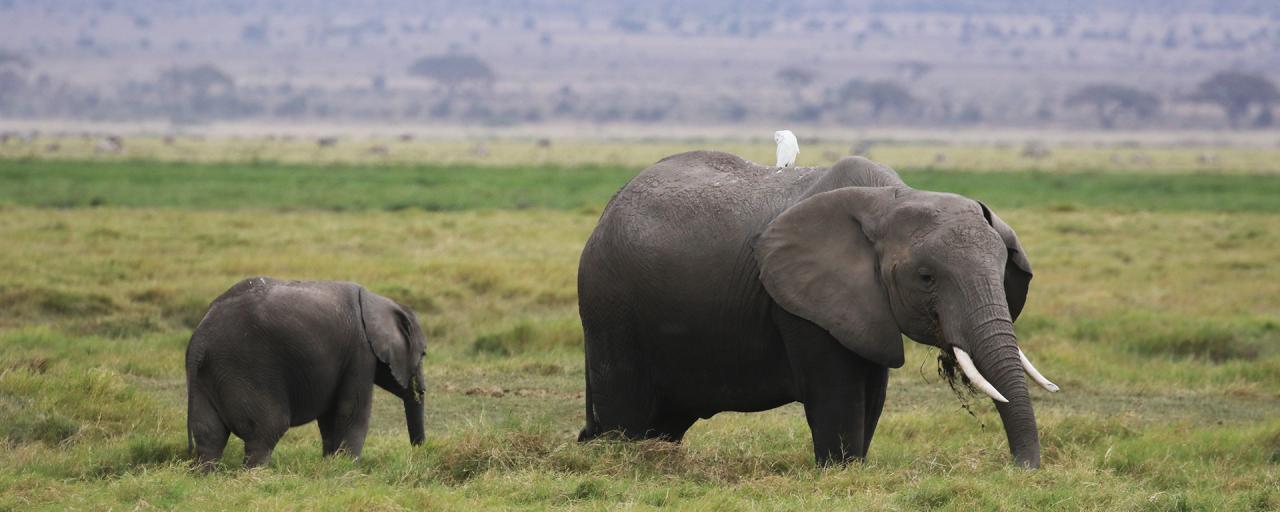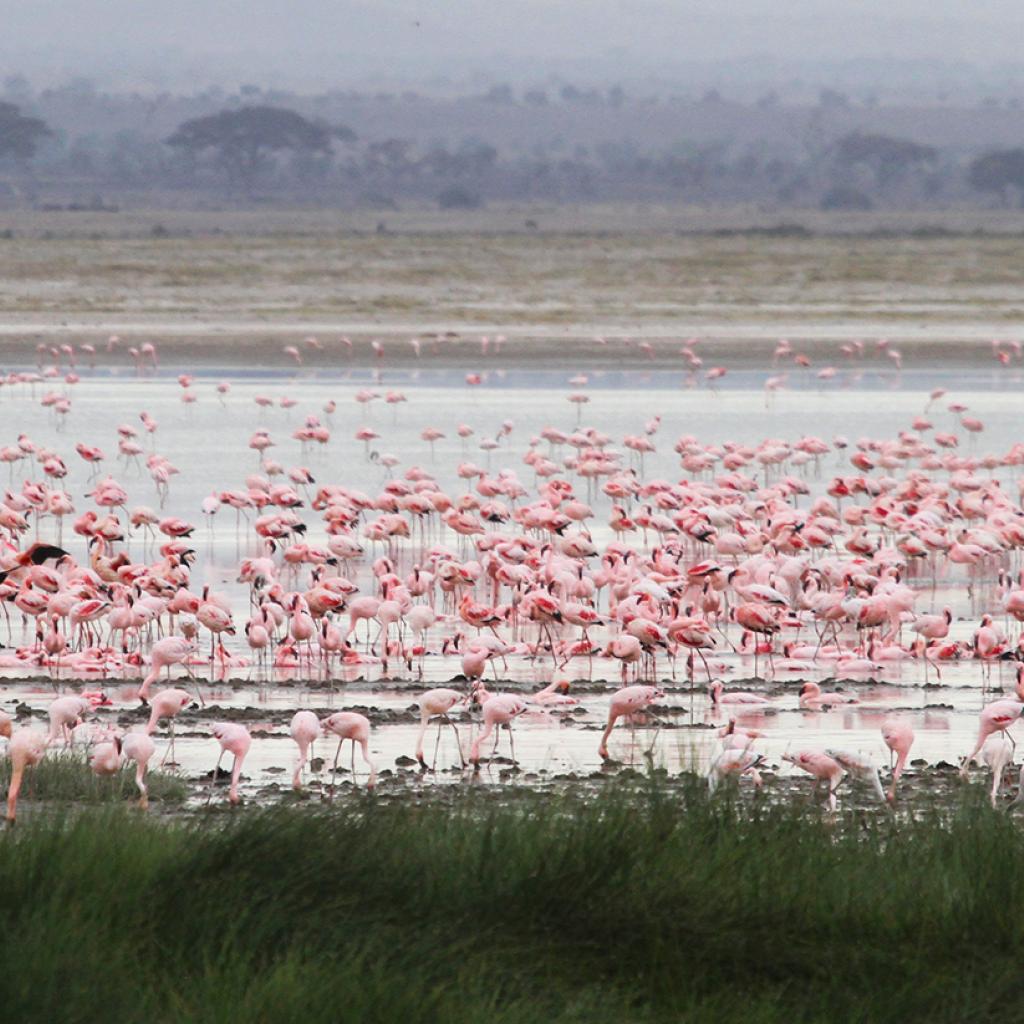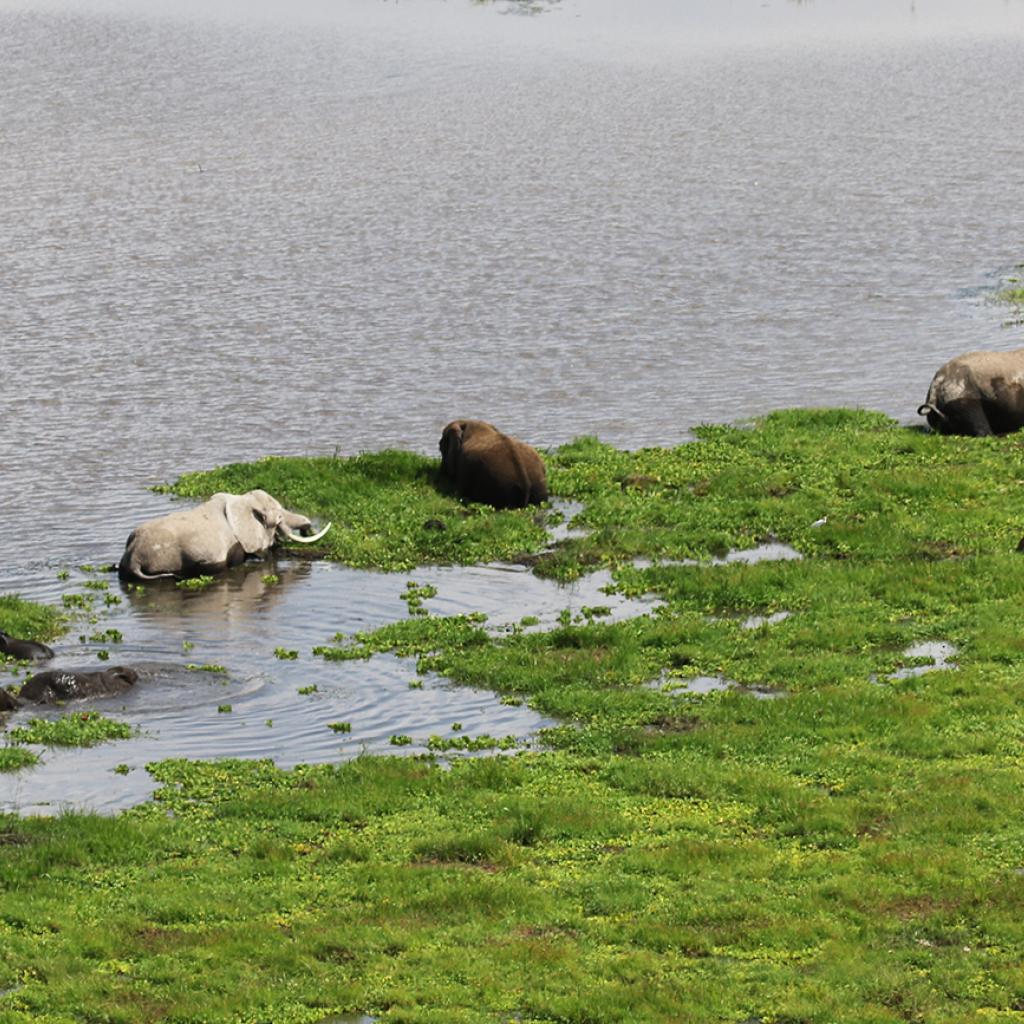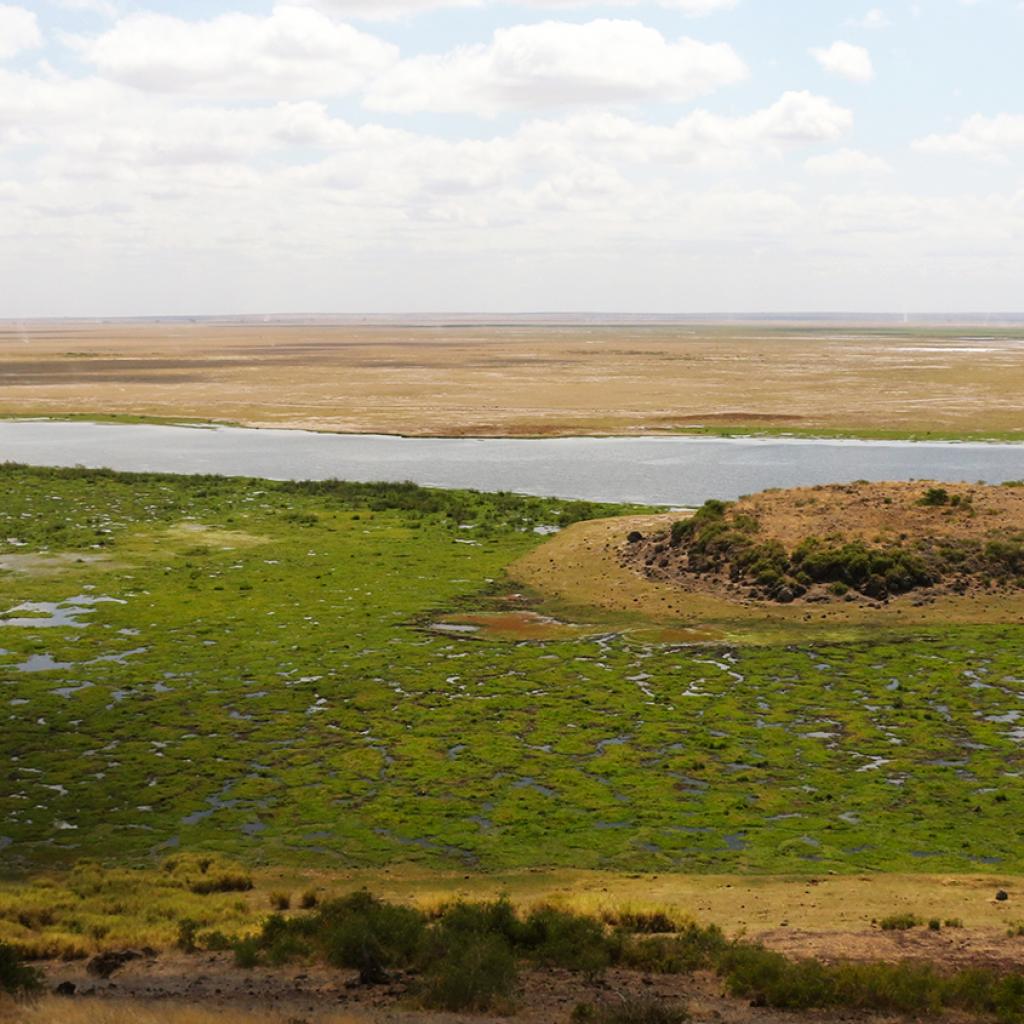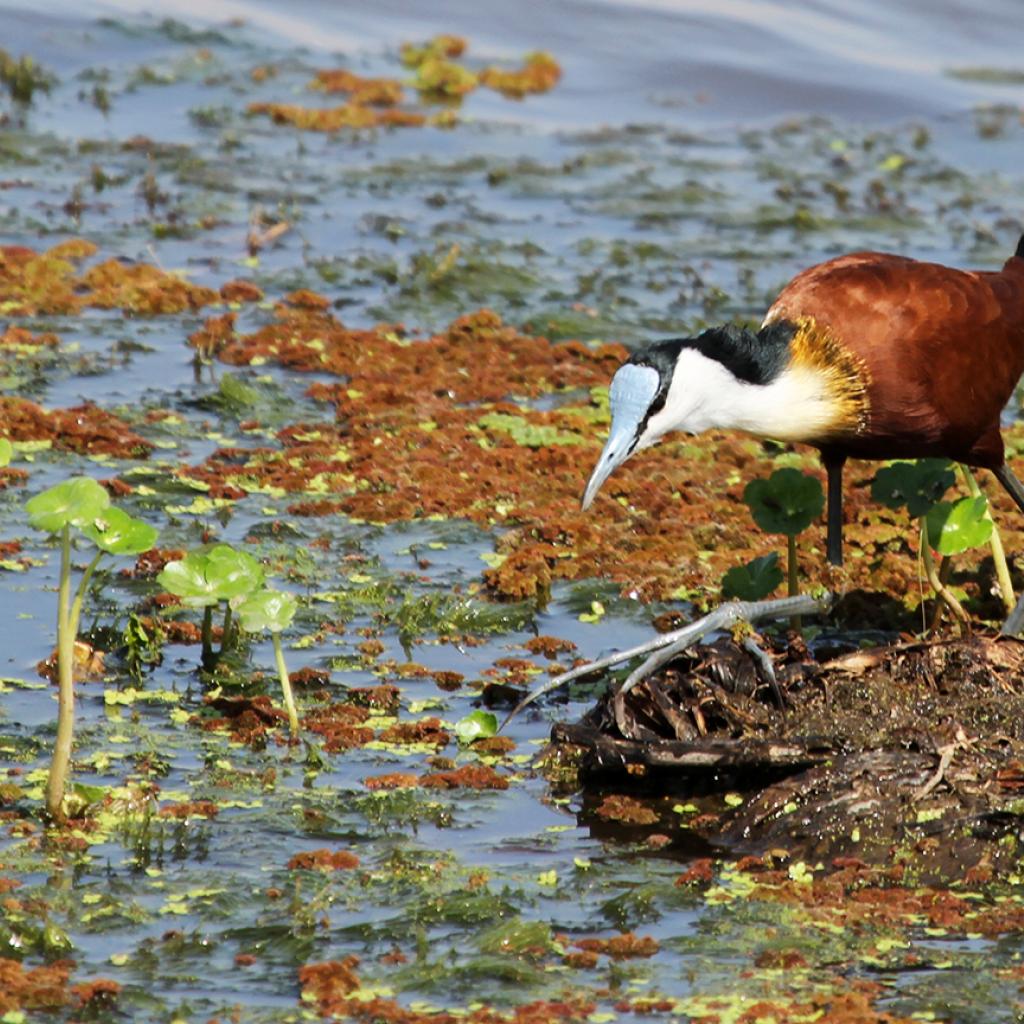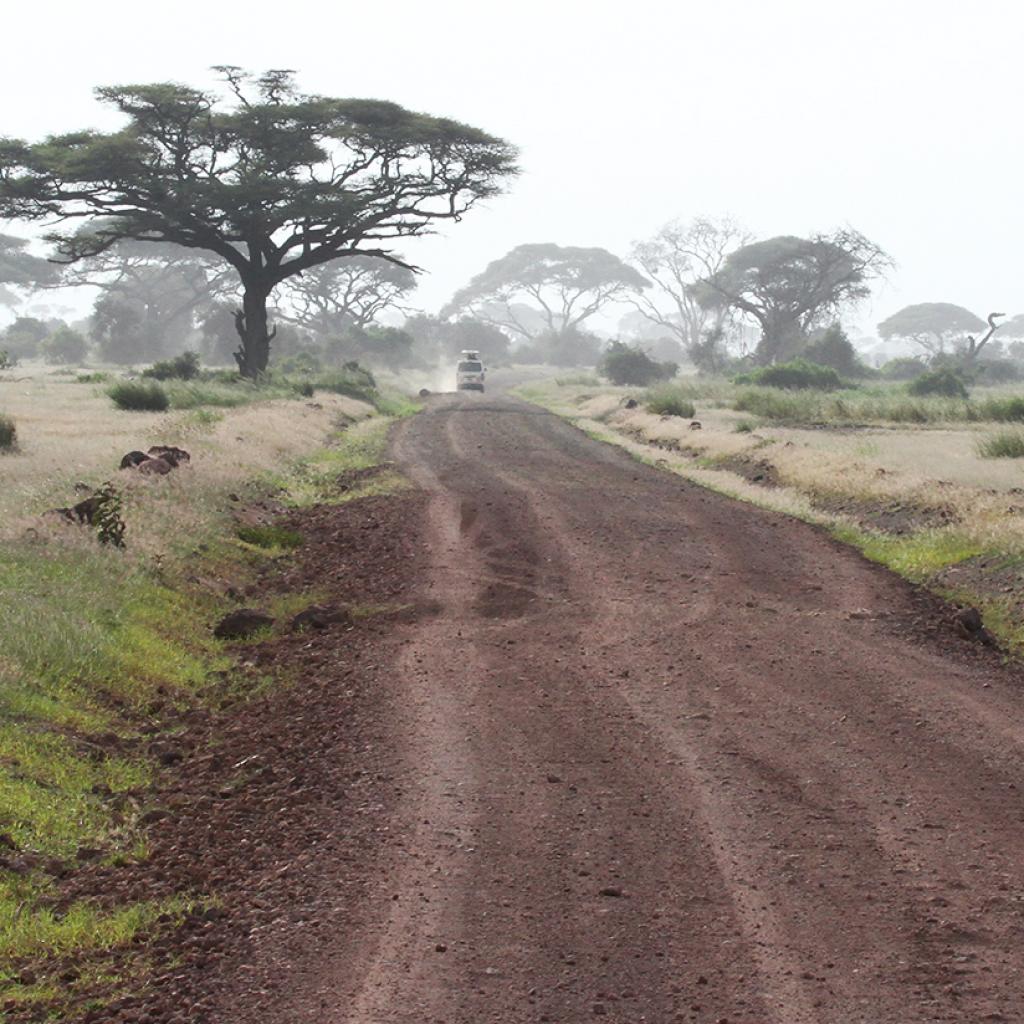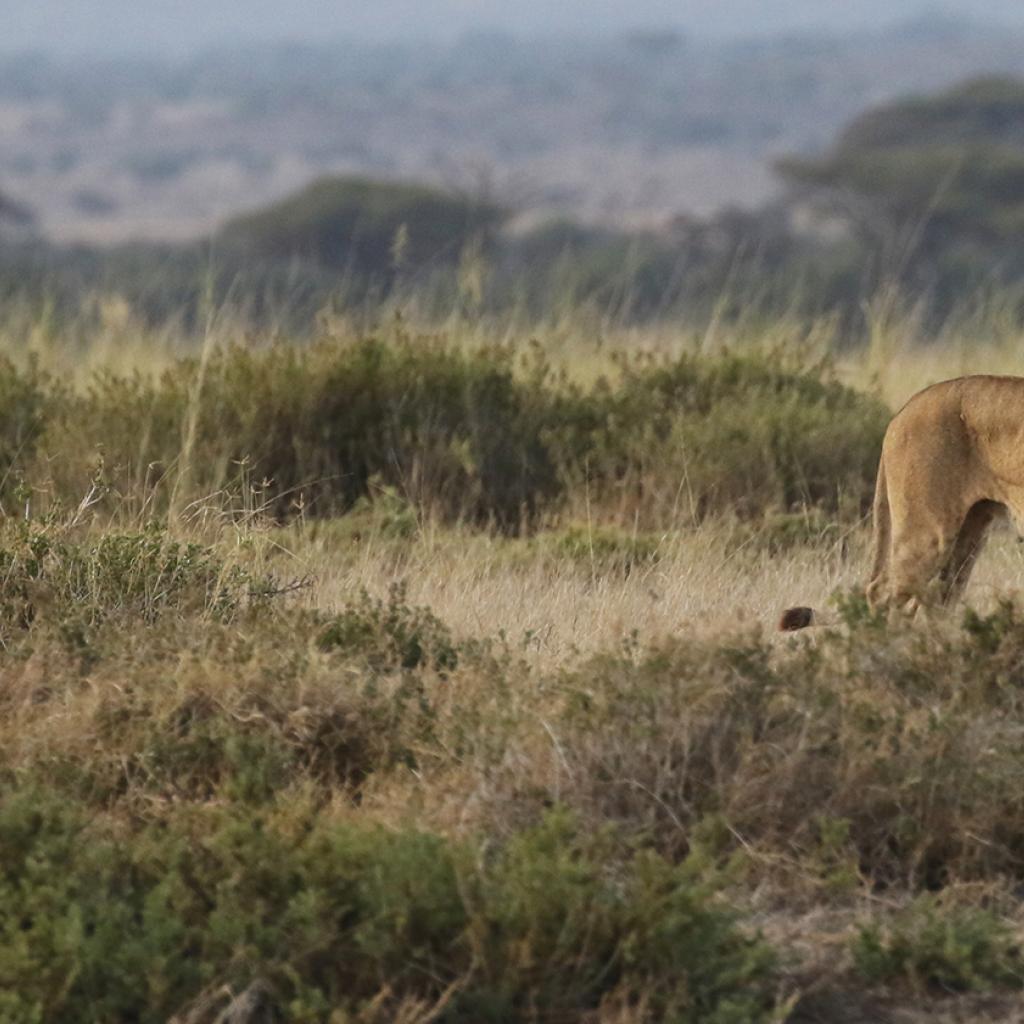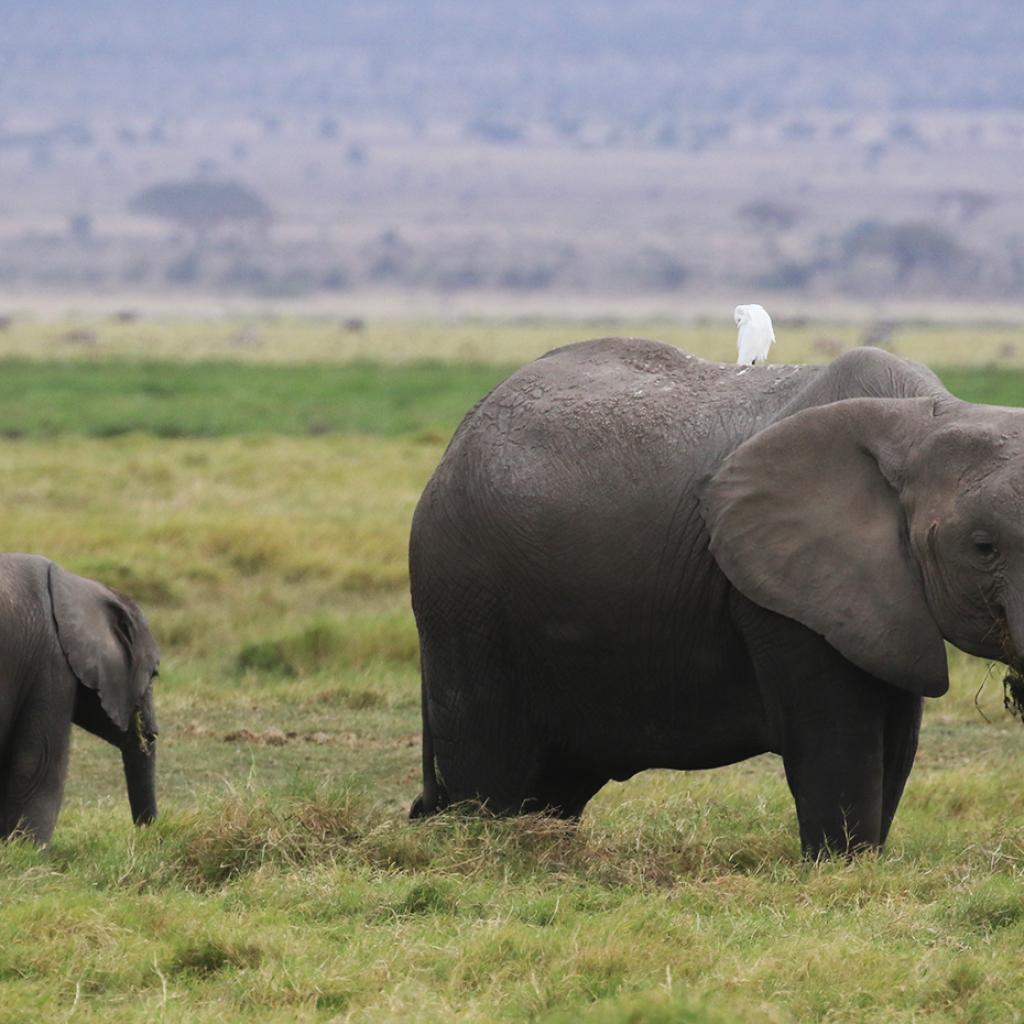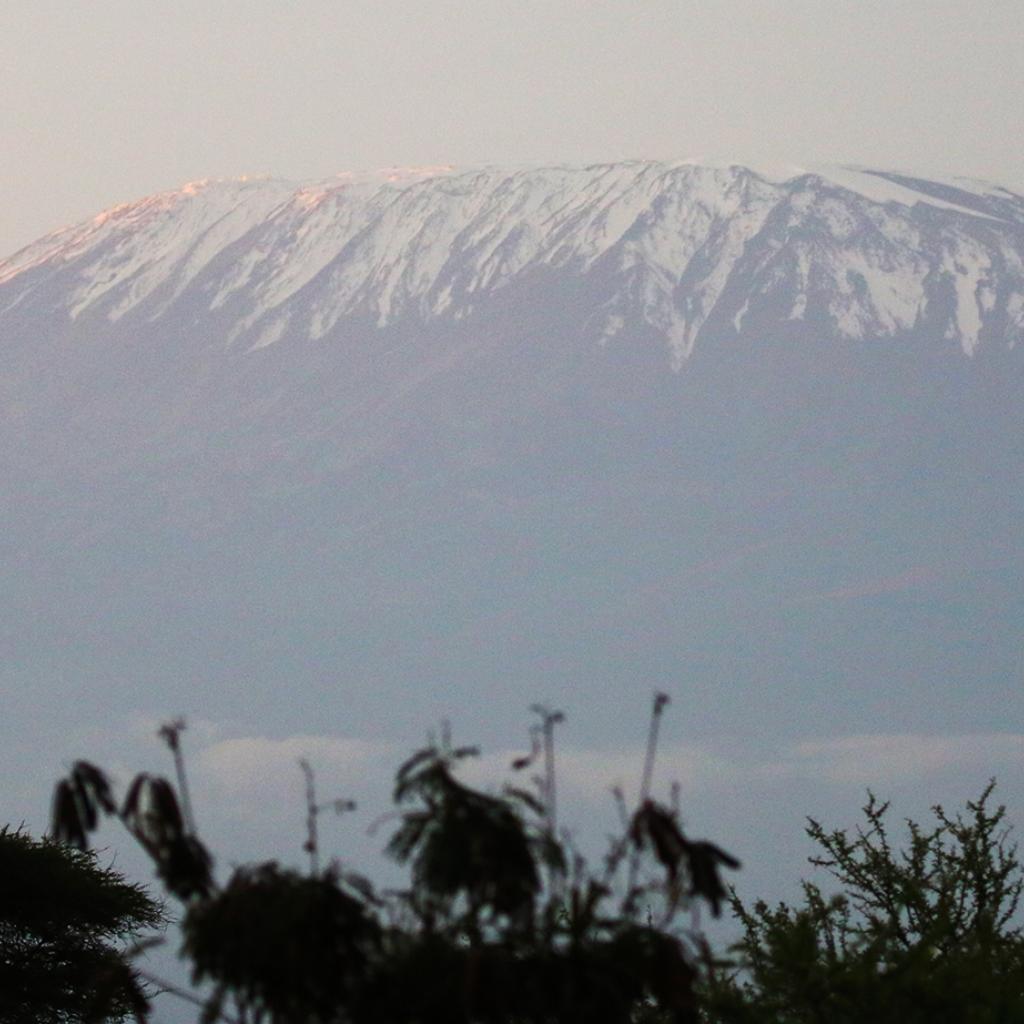The image of elephants moving in packs in the grassy and arid plains with the snow-covered peak of Mount Kilimanjaro in the background, is one of the most exciting scenes of the Amboseli National Park and recognized by travelers worldwide.
This park was established in 1968 as a natural reserve and was declared a National Park in 1974; it is located at an altitude ranging from 1,189 to 1,372 meters in Southern Kenya near the border with Tanzania, and just North of Mount Kilimanjaro.
It is part of the Amboseli Ecosystem covering an area of over 3,000 square kilometers and, in addition to its namesake park, it also includes some ranches and Conservation Areas bordering with it, the Selenkay Conservancy and Kitirua Conservancy, and the Chyulu Hills National Park; this territory was home to the ancient migratory corridors linking Amboseli with the North of Tanzania, the Athi plains near Nairobi and the Masai Mara.
Despite covering an area of only 392 square kilometers the Amboseli National Park encloses 5 different habitats: the acacia forests, the rock formations of lava covered with thorny bushes, the palm trees, the dusty plains of open savannah and the lakes and marshes; because of its diversity and for its fragile ecosystem the Amboseli National Park was declared a UNESCO Biosphere Reserve.
The park is located on the ground where, in the Pleistocene, there was a lake and its thin, dusty earth is what's left of its dried up bed; his name "Amboseli", translation of the word "Empusel", in Maa language means "land of the dust."
During the rainy season, the water still collects in a portion of this ancient lake, creating the Lake Amboseli, an alkaline and seasonal shallow lake much loved by aquatic birds, especially pink flamingos.
Under the Park run some underground rivers coming from the nearby Mount Kilimanjaro, they are fed by rain and snow fall on the mountain and by the melting of the glacier; these waters penetrate into the ground at high altitude, flow down in the plains, and convey together in these rivers that, on their side, feed the springs and lush green ponds, rich of papyri, present in the park; it is thus that a reserve of permanent water is created, and this allows the survival of the animals of the park during the dry season; these underground rivers also allow the survival of the acacia forests and oasis of palm trees in the park.
The main attractions of the park, and the reason why many visitors come here, are: the large herds of elephants, present in large numbers, with the most beautiful examples of all Africa, including some big tuskers; Mount Kilimanjaro, that offers one of the most beautiful scenery on the continent and the open spaces and the plain allowing both the sight to space to the horizon and to spot, even in the distance, the wildlife.
The park hosts, as well, the Observation Hill, a place much loved by visitors. It is a hill of volcanic origin, the only high point of the park, where you can easily go up and watch to 360 degrees, a breathtaking panorama that sweeps from the arid and dusty prairie, to the green springs and swamps beloved by elephants, hippos and buffalos and, on clear days, especially at dawn and dusk, the majestic Mount Kilimanjaro, the highest peak on the African continent and the world's highest solitary mountain.
The park, one of the main attractions of Kenya with regard to safaris, is open all year round, but the best time to visit it corresponds to the dry season from June to October and from December to March; while in the period from November to January birds are present in the park, also those migrating here from Europe and Asia, making the park a paradise for birdwatchers.
In addition to its famous elephants, the Amboseli National Park hosts inside different species of mammals: lions, leopards, hyenas, cheetahs, buffalos, zebras, wildebeests, gazelles, several species of antelopes, jackals, baboons and many others; there are also many species of birds, including several birds of prey and water birds here, mainly located at the marshes and springs.
Inside the park you can only make game drive, you cannot do instead walking safaris, the only places where you can get out are at the Observation Hill, and within Ol Tukai where there are 2 lodges.
You can, however, visit the nearby Masai villages if you want to find out more about the lifestyle and culture of these people who live in these lands and have kept intact their traditions.
The park is easily accessible from Nairobi, that is about 240 km away; a 4 to 5 hours drive is enough of transfer along the Namanga or along the road from Nairobi to Arusha and entering from the Meshanani Gate, or again along the road from Nairobi to Mombasa entering the park from the Remito Gate, you can also take a short flight from Nairobi Wilson airport; it is also possible to reach the park from Mombasa along the road through the West Tsavo National Park leading to the Kimana or Kelunyiet Gates.
The park has a total of five gates: Kelunyiet, Iremito, Ilmeshanan, Kitirua and Airstrip.


